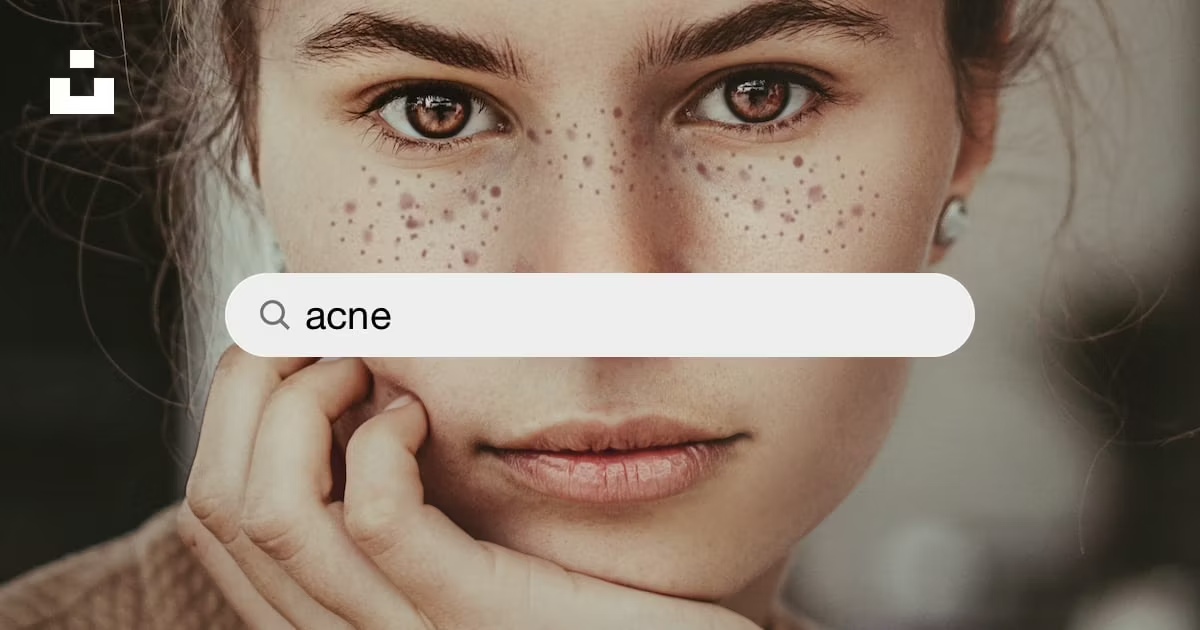introduction:
Dealing with redness from pimples and acne can be frustrating and can hurt our self-confidence. However, there are effective ways to reduce and even eliminate redness from these skin issues. In this article, we will explore 11 proven methods to banish redness and restore a clear, glowing complexion. From proper cleansing techniques to the power of natural ingredients, we will cover all the bases to help you achieve the skin you’ve always desired.
1- Understanding the Causes of Redness in Pimples and Acne
Pimples and acne are common skin conditions that can cause redness and inflammation. Understanding the underlying causes of redness is essential in finding effective ways to banish it. One of the primary culprits is excess sebum production, which leads to clogged pores and bacterial growth. When these pores become inflamed, they appear red and swollen. Hormonal imbalances, stress, and certain medications can also contribute to the redness associated with pimples and acne.
To effectively reduce redness, it is crucial to address the root causes. Maintaining a consistent skincare routine is key. Gentle cleansing twice a day helps remove excess oil, dirt, and bacteria from the skin’s surface. Look for cleansers specifically designed for acne-prone skin, containing ingredients like salicylic acid or benzoyl peroxide. Avoid harsh scrubbing or using abrasive products, as they can further irritate the skin and worsen redness.
2- Importance of Proper Cleansing in Reducing Redness
Cleansing your skin properly is vital in reducing redness caused by pimples and acne. Start by wetting your face with lukewarm water. Apply a small amount of the cleanser to your fingertips and gently massage it onto your skin using circular motions. Be sure to cover your entire face, paying extra attention to areas prone to breakouts. Rinse thoroughly with cool water and pat your skin dry with a clean towel.
Over-cleansing or using harsh cleansers can strip the skin of its natural oils, leading to dryness and increased redness. It is essential to strike a balance and choose products that are gentle yet effective. Remember to cleanse your face in the morning and before bed to remove any impurities that may have accumulated throughout the day. Consistency is key to maintaining clear and calm skin.
3- The Power of Ice in Soothing and Reducing Redness
Ice can be a powerful tool in soothing and reducing redness caused by pimples and acne. Its cold temperature helps constrict blood vessels and reduce inflammation. Additionally, ice can temporarily numb the area, providing relief from any discomfort or pain associated with redness.
To use ice effectively, wrap a few ice cubes in a clean cloth or plastic bag. Gently press the ice onto the affected areas of your skin for about 1 to 2 minutes at a time. Take short breaks in between to avoid prolonged exposure to cold temperatures. Repeat this process a few times a day, especially when you notice increased redness or swelling.
Ice should never be applied directly to the skin, as it can cause frostbite or damage the delicate skin barrier. Always use a barrier, such as a cloth or plastic bag, to protect your skin. Remember that ice is a temporary solution and should be used in conjunction with other redness-reducing techniques for optimal results.
4- Spot Treatments for Targeted Redness Reduction
Spot treatments are specifically formulated to target individual pimples and acne spots. They contain active ingredients that help reduce redness and inflammation and promote healing. When choosing a spot treatment, look for ingredients like benzoyl peroxide, salicylic acid, or sulfur, as they are known for their effectiveness in combating pimples and reducing redness.
To use a spot treatment, start by cleansing your face and patting it dry. Apply a small amount of the spot treatment directly onto the affected areas using clean fingertips or a cotton swab. Be careful not to apply too much product, as it can lead to dryness or irritation. Allow the spot treatment to dry completely before applying any other skincare products or makeup.
Spot treatments are best used as a targeted solution for specific pimples or acne spots. They should not be applied to the entire face unless directed by a skincare professional. Remember to read the instructions carefully and follow the recommended usage guidelines for optimal results.
5- Aloe Vera’s Calming Properties for Redness Relief
Aloe vera is a natural ingredient known for its soothing properties. It has been used for centuries to treat various skin conditions, including redness and inflammation caused by pimples and acne. Aloe vera contains compounds that help reduce redness, promote healing, and moisturize the skin.
To harness the benefits of aloe vera, start by selecting a pure aloe vera gel or extract. Avoid products that contain added fragrances or alcohol, as they can further irritate the skin. After cleansing your face, apply a thin layer of aloe vera gel directly onto the affected areas. Gently massage the gel into your skin using circular motions until it is fully absorbed. Leave it on overnight or rinse it off after 20 minutes, depending on your preference.
Aloe vera can be used as a standalone treatment or in combination with other redness-reducing techniques. Its gentle nature makes it suitable for all skin types, including sensitive skin. Incorporating aloe vera into your skincare routine can help calm redness, reduce inflammation, and promote overall skin health.
6- Harnessing the Benefits of Green Tea for Soothing Redness
Green tea is not only a popular beverage but also a powerful skincare ingredient known for its antioxidant and anti-inflammatory properties. It contains polyphenols, catechins, and EGCG, which help reduce redness, fight bacteria, and soothe the skin. When applied topically, green tea can help calm irritated skin, reduce redness, and promote a healthy complexion.
To use green tea as a redness-reducing treatment, start by brewing a cup of green tea. Allow it to cool completely before transferring it to a clean spray bottle. After cleansing your face, spritz the green tea onto your skin or use a clean cotton pad to apply it directly to the affected areas. Gently pat the green tea on your skin until it is fully absorbed. You can also use green tea-infused skincare products for added benefits.
Green tea can be used daily as part of your skincare routine to help manage redness and promote a clear complexion. Its natural properties make it a safe and effective option for all skin types. Remember to store any leftover green tea in the refrigerator to maintain its freshness and potency.
7- Honey’s Natural Antibacterial and Anti-Inflammatory Effects on Redness
Honey has long been used for its natural antibacterial and anti-inflammatory properties. It contains enzymes, antioxidants, and antimicrobial compounds that help reduce redness, fight bacteria, and promote healing. When applied topically, honey can help soothe irritated skin, reduce redness, and prevent further breakouts.
To harness the benefits of honey, start by selecting raw, organic honey. Avoid processed or flavored varieties, as they may contain additives that can irritate the skin. After cleansing your face, apply a thin layer of honey directly onto the affected areas. Gently massage the honey into your skin using circular motions for about 1 to 2 minutes. Leave it on for 15 to 20 minutes, then rinse it off with lukewarm water.
Honey can be used as a standalone treatment or combined with other redness-reducing ingredients. Its natural properties make it suitable for all skin types, including sensitive skin. Incorporating honey into your skincare routine can help calm redness, reduce inflammation, and promote a healthy complexion.
8- Tea Tree Oil as a Potent Redness-Reducing Ingredient
Tea tree oil is a potent ingredient known for its antibacterial and anti-inflammatory properties. It has been used for centuries to treat various skin conditions, including redness and inflammation caused by pimples and acne. Tea tree oil contains terpenes, which help reduce redness, fight bacteria, and soothe the skin.
To use tea tree oil effectively, start by diluting it with a carrier oil, such as jojoba oil or coconut oil. This is important as tea tree oil can be quite strong and may cause irritation if used undiluted. Mix 2 to 3 drops of tea tree oil with 1 tablespoon of carrier oil. After cleansing your face, apply a small amount of the diluted tea tree oil mixture directly onto the affected areas. Gently massage it into your skin using circular motions until it is fully absorbed. Avoid applying it to the entire face, as it may cause dryness or irritation.
Tea tree oil can be used as a spot treatment or added to your regular moisturizer or cleanser for added benefits. Its natural properties make it a suitable option for most skin types, but it is always wise to patch test before using it on your entire face. Remember to read the instructions carefully and follow the recommended usage guidelines for optimal results.
9- Exploring Over-the-Counter Creams for Redness Management
Over-the-counter creams can be effective in managing redness caused by pimples and acne. These creams often contain active ingredients like benzoyl peroxide, salicylic acid, or sulfur, which help reduce redness, unclog pores, and promote healing. When choosing an over-the-counter cream, look for products specifically formulated for acne-prone skin.
To use an over-the-counter cream, start by cleansing your face and patting it dry. Apply a small amount of the cream directly onto the affected areas using clean fingertips. Gently massage it into your skin until it is fully absorbed. Avoid applying too much product, as it can lead to dryness or irritation. Allow the cream to dry completely before applying any other skincare products or makeup.
Over-the-counter creams can be used as part of your daily skincare routine to help manage redness and prevent further breakouts. They are readily available and often cost-effective compared to prescription treatments. Remember to read the instructions carefully and follow the recommended usage guidelines for optimal results.
10- Choosing Non-Comedogenic Products to Prevent Further Redness
Non-comedogenic products are specially formulated to prevent clogged pores, which can lead to further redness and breakouts. These products are designed to be lightweight, oil-free, and non-irritating, making them suitable for acne-prone skin. When choosing skincare or makeup products, look for the non-comedogenic label or ingredients like dimethicone, glycerin, or hyaluronic acid.
Using non-comedogenic products helps ensure that your skin remains clear and free from additional redness. These products are less likely to clog pores or cause irritation, allowing your skin to breathe and heal. Remember to cleanse your skin thoroughly before applying any non-comedogenic products to maximize their effectiveness.
11- Calming Ingredients to Look for in Skincare Products for Redness Reduction
When shopping for skincare products to reduce redness caused by pimples and acne, look for specific calming ingredients. These ingredients help soothe irritated skin, reduce inflammation, and promote a healthy complexion. Some of the key calming ingredients to look for include chamomile, cucumber extract, oat extract, and niacinamide.
Chamomile has anti-inflammatory properties and helps calm redness and irritation. Cucumber extract is known for its cooling and soothing effects on the skin. Oat extract helps reduce inflammation and restore the skin’s natural barrier. Niacinamide, a form of vitamin B3, helps regulate oil production, reduce redness, and improve overall skin health.
Incorporating skincare products containing these calming ingredients can help manage redness and promote a clear and healthy complexion. Remember to patch-test new products and introduce them gradually into your skincare routine to minimize the risk of irritation.
Conclusion: Combining Different Strategies for Effective Redness Banishment
Banishing redness from pimples and acne requires a multifaceted approach. By understanding the causes of redness and implementing the right strategies, you can effectively reduce inflammation, soothe irritated skin, and promote a clear complexion.
Start by properly cleansing your skin using gentle yet effective products. This helps remove excess oil, dirt, and bacteria, reducing the risk of clogged pores and further redness. Incorporate the power of ice into your skincare routine to constrict blood vessels and provide temporary relief from redness and swelling.
Spot treatments can target individual pimples and reduce redness effectively. Look for ingredients like benzoyl peroxide, salicylic acid, or sulfur for optimal results. Harness the benefits of natural ingredients like aloe vera, green tea, honey, and tea tree oil to soothe redness, fight bacteria, and promote healing.
Consider using over-the-counter creams specifically formulated for acne-prone skin to manage redness and prevent further breakouts. Choose non-comedogenic products to avoid clogged pores and additional redness. Look for calming ingredients like chamomile, cucumber extract, oat extract, and niacinamide in skincare products to further reduce redness and promote a healthy complexion.
Remember that everyone’s skin is unique, and it may take some trial and error to find the right combination of strategies and products that work for you. Be patient, consistent, and gentle with your skincare routine. If your redness persists or worsens, it is always wise to consult with a dermatologist for further evaluation and guidance.
By combining different strategies and incorporating the right ingredients into your skincare routine, you can effectively banish redness from pimples and acne, achieving a clear, calm, and confident complexion.
CTA: For more skincare tips and advice, visit our website to stay up to date with the latest trends and developments in skincare.



